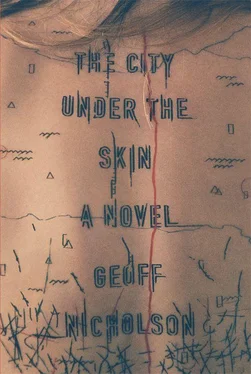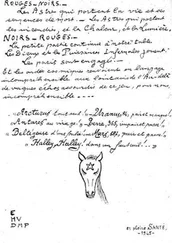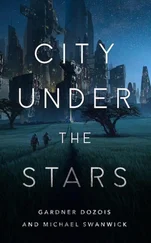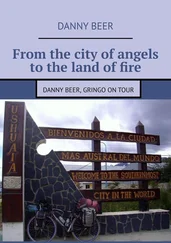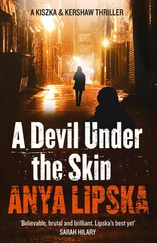“You said you didn’t know what you saw the other night.”
“I still don’t,” said Zak.
“I can help with that.” She took a scuffed, bestickered laptop out of her backpack. “I took some pictures. They’re not great, but they’re a start.”
Zak was inclined to ask, “The start of what?” but he held his tongue. He also wondered why she’d been taking pictures. Was she a tourist? A street photographer? A student of urban renewal? He didn’t ask any of that either. Recent events suggested he might be much better off not knowing what he’d seen, but it was already too late for that.
Marilyn Driscoll brought the laptop to life, and there on-screen appeared thumbnails of the pictures she’d taken on what Zak was increasingly, and ever less ironically, coming to think of as “that fateful night.” She clicked through a handful of quickly taken, not especially clear images. In one of them Zak could see himself standing in the doorway of Utopiates, looking awkward and profoundly unphotogenic. He didn’t like seeing pictures of himself at the best of times. They moved on to another image, one that showed the battered Cadillac: that wasn’t exactly fascinating either.
Then Marilyn brought up an image of the driver and zoomed in on his face. That was more revealing in a way. You could probably have identified the guy from it, though Zak could have identified him perfectly well without a photograph. In any case, there was nothing very special about him. To Zak he looked like just another bruiser, a petty crook, not a rarity in this city or any other.
Marilyn opened up the next picture, the one that seemed by far the most important, showing the pale, tattooed skin of the naked woman’s back. The photograph had been taken from an oblique angle, so that the camera’s automatic focus had struggled to find a center, and the framing was haphazard, but at least Zak could see that his impression had been right: it really was a map.
“Pretty crude,” said Marilyn Driscoll.
“The photographs?” said Zak.
“I meant the tattoos. Which is to say, a very crude map.”
“Yes,” Zak agreed, “although in general, the cruder the map, the clearer the mapmaker’s intentions.”
He hoped that didn’t sound too pretentious. It was true, as far as it went, but he was aware that he was saying it with more gravitas than it merited. He was playing the scholar, trying to impress this woman, attempting to do an impersonation of a shrewd, wise man.
“I can enhance it a little,” Marilyn said.
She played with the image of the woman’s back, sharpened it, adjusted the brightness and contrast, the shadow and highlight function, until it became a little clearer, though scarcely less enigmatic. Zak could now see, at the center of the woman’s back, running shakily down either side of her spine, two long, rough tattooed lines. One of them, in red, looked somewhat like the representation of a road. The other, a black line with cross-hatching, could have been a railroad track. Two other, more or less parallel, blue lines snaking lazily, horizontally across the woman’s shoulder blades might possibly have been the banks of a river or canal. Elsewhere on the exposed flesh were scattered squares and rectangles that you might interpret as buildings, though you could just as easily have interpreted them as something else. Dotted and zigzag lines might have signified routes or directions, but then again they might not.
“So what are we looking at here exactly?” Marilyn asked. “You think it’s a real map?”
“All maps are real,” said Zak, hoping that he wasn’t pushing his luck too far.
“But where’s it a map of?” said Marilyn. “Is it an actual place or an imaginary one? Can we use it to get somewhere? Is it maybe just decorative? Maybe it doesn’t have any use at all.”
“Every map has its use,” said Zak. “The problem may be working out what that use is. And it may be even harder to work out who’s the intended user.”
Marilyn Driscoll nodded thoughtfully. She seemed to be impressed: he liked that.
“And what’s that thing there?” asked Marilyn.
She pointed at a small round tattoo located right on the flesh of the woman’s coccyx. The image was especially unclear in that area, but Zak knew well enough what it was.
“That’s a compass rose,” he said. “The kind of thing you’d see in the corner of a map or chart, showing cardinal directions — north, south, east, west — sometimes the intermediate ones too. Must hurt like hell to have it tattooed there.”
“You think?” said Marilyn.
“They’re called roses because some of them are very ornate. The first one was drawn by a sixteenth-century Portuguese cartographer named Pedro Reinel. And originally they were called wind roses because early mapmakers made no distinction between a direction and a wind that came from that direction.”
“You’re good,” Marilyn said.
“Are you glad you came back?”
“Glad might be overstating it,” she said, delicately touching her eye where Billy Moore had punched her.
“And of course,” said Zak, “as far as that goes, the early roses made no distinction between magnetic north and true north. That’s called deviation. I could go on.”
“I imagine you could.”
It might have been a putdown, but he didn’t think it was. She seemed happy enough to hear him spout his cartographic expertise. She looked at him approvingly, but then with some concern.
“We’re both going to have black eyes,” she said. “People will think we’ve been boxing each other.”
“Well, they’ll think you won. Mine’s going to look worse than yours.”
“Maybe we need to get a bag of ice.”
“Funny thing,” said Zak. “Where they have ice they often have alcohol.”
“Don’t tell me you know some sleazy watering hole where cartographers go to lick their wounds?”
“I don’t actually hang out with cartographers,” Zak confessed. “But I do know a sleazy watering hole where I go to lick my wounds.”
“Good enough,” said Marilyn.
Wrobleski didn’t like having to sit in one place in order to be informed, entertained, or sedated: he found the passivity excruciating. That’s why he’d bought the biggest TV he could find — panoramic, high-def, as large as his own bed, all the bells and whistles and klaxons — and wall-mounted — once they’d reinforced the wall of his living room. When there was something he really needed to see, he could watch it while still pacing around the room.
The screen currently showed two women and a man sitting uncomfortably in gawkily stylish, primary-colored chairs. Behind them an electronic backdrop showed ever-changing “then and now” images of the city. One woman was the interviewer, young, eagerly serious, but unthreatening, unlikely to give the other two a hard time. The other woman was familiar to Wrobleski, and to everybody else in this city. It was the mayor, Margaret “Meg” Gunderson, a big, severe-looking woman, a bruiser with a background in the transport unions, worn only somewhat smooth by her years in city politics. She’d been pushed through media boot camp, taught when and how to smile, to speak slowly and display a certain quirky charm, but she still looked like someone you wouldn’t want to tangle with in a street fight.
The man, if you wanted Wrobleski’s opinion, was a ludicrous, pretentious clown, albeit one for whom Meg Gunderson apparently had some use at that moment. The interviewer introduced the clown as Marco Brandt, a member of the mayor’s select committee on inner-city regeneration, and described him as a “futurologist with a special interest in speculative urbanism,” but Wrobleski had stopped listening before she’d gotten around to explaining what the fuck that meant.
Читать дальше
